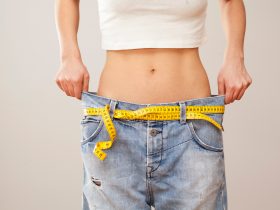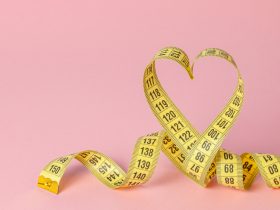When you lose weight, it’s because of changes in your muscle, water, and fat composition. When compared to weight reduction, the goal of fat loss is more focused and beneficial because it targets fat stores.
It’s not always clear if the weight loss is coming from muscle or fat. Why fat loss is more essential than weight loss and how to discern the difference, as well as strategies for losing fat while keeping muscle, are discussed in this article.
Methods for assessing fat loss
The use of a scale to monitor the success of a weight loss program is widespread. However, most scales don’t distinguish between fat loss and muscle loss, so while this can be beneficial, it’s not perfect. Because of this, monitoring your weight alone isn’t a good indicator of whether or not you’re losing muscle in addition to fat.
The results of a body fat scale, on the other hand, can be more reliable because they take into account both fat and muscle mass. Skinfold calipers are another option for estimating body fat percentage, although they require some skill for reliable results.
Losing fat should be your primary focus, not weight
Numerous weight-reduction plans guarantee rapid and simple weight loss. However, keep in mind that some of this weight loss may be due to muscle and water loss. Muscle is an important part of your body, and its loss can have negative effects on your health.
There are many advantages to maintaining a healthy muscle-to-fat ratio, including the maintenance of normal blood sugar levels, the maintenance of normal blood fat levels (including triglyceride and cholesterol levels), and the regulation of inflammation. A higher percentage of body fat has been linked in numerous studies to metabolic syndrome, heart disease, diabetes, and other chronic conditions.
The loss of muscle mass as one ages is a major contributor to frailty and, in extreme cases, impairment; doing what you can preserve your muscle mass is therefore important. Another benefit of building muscle is a higher basal metabolic rate. This is the primary reason men have greater caloric requirements than women.
Therefore, decreasing muscle can reduce your basal metabolic rate and make it simpler to recover any fat weight you may have lost.
The best way to reduce body fat without losing muscle
Increase your protein intake
Protein is essential for many biological processes. Enzymes aid in digestion and energy synthesis, maintain fluid balance and immune health, and so forth; without them, these processes would not be possible.
When trying to shed pounds, protein is essential for maintaining your muscle mass and helping you build new muscle. One study had young men engage in rigorous physical training alongside a low-calorie diet (0.55 or 1.1 grams of protein per pound; 1.2 or 2.4 grams per kilogram of body weight).
Men who followed the higher protein diet shed an additional 2.9 lb (1.3 kg) of fat mass and acquired an additional 2.4 lb (1.1 kg) of muscle, despite the fact that both groups dropped a considerable amount of weight.
Reduce your caloric intake
A calorie deficit is necessary for weight loss. A calorie deficit can be created by eating less, increasing physical activity, or doing both. However, if you severely restrict your caloric intake, you risk losing muscle mass rather than fat.
Instead, try restricting your caloric intake by about 500–600 calories per day to facilitate fat loss while preventing muscle loss. Fruits, vegetables, whole grains, lean protein foods, and low-fat dairy are all good choices that will help you cut back on calories, but sugary drinks, processed meats, and fried foods should be avoided.
Exercise
Exercise can facilitate fat loss as opposed to muscle loss. Reviewing six trials, researchers discovered that older people who followed a calorie-restricted diet and exercised at least three times per week kept 93% more muscle than those who did not exercise. While exercise alone might help you keep muscle while dieting, you might see even better benefits by also increasing the amount of protein you eat.
When you lose weight, it’s because of a reduction in your total body mass, but when you lose fat, it’s because of a loss in fat mass. Tracking your weight alone isn’t as helpful for monitoring fat loss as using a body fat scale or skinfold caliper. Inches or centimeters lost from the waist and hips are another easy way to gauge fat reduction, as is seeing a difference in the way your clothes fit in those areas. If you want to improve your health, you should aim to reduce your body fat percentage rather than your muscle mass. Weight loss can be prioritized by consuming a high-protein diet, engaging in moderate exercise, and imposing a moderate calorie deficit.
















Find Us on Socials